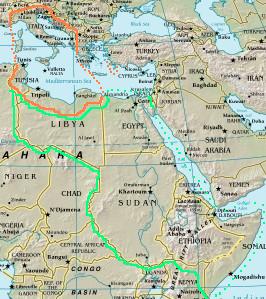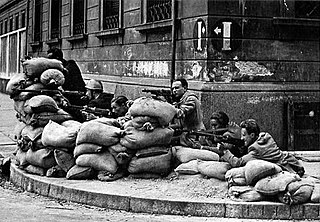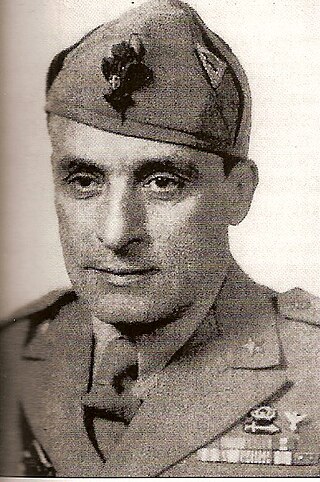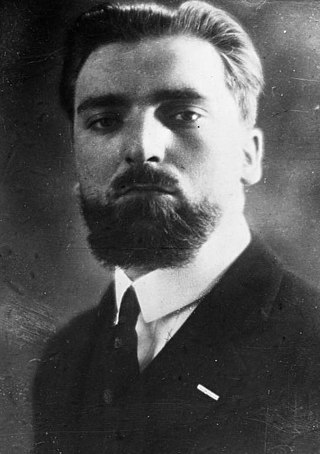
Victor Emmanuel III, born Vittorio Emanuele Ferdinando Maria Gennaro di Savoia, was King of Italy from 29 July 1900 until his abdication on 9 May 1946. A member of the House of Savoy, he also reigned as Emperor of Ethiopia (1936–1941) and King of the Albanians (1939–1943) following the Italian invasions of Ethiopia and Albania. During his reign of nearly 46 years, which began after the assassination of his father Umberto I, the Kingdom of Italy became involved in two world wars. His reign also encompassed the birth, rise, and fall of the Fascist regime.

The participation of Italy in the Second World War was characterized by a complex framework of ideology, politics, and diplomacy, while its military actions were often heavily influenced by external factors. Italy joined the war as one of the Axis Powers in 1940 with a plan to concentrate Italian forces on a major offensive against the British Empire in Africa and the Middle East, known as the "parallel war", while expecting the collapse of British forces in the European theatre. The Italians bombed Mandatory Palestine, invaded Egypt and occupied British Somaliland with initial success. However, the British counterattacked, eventually necessitating German support to prevent an Italian collapse in North Africa. As the war carried on and German and Japanese actions in 1941 led to the entry of the Soviet Union and United States, respectively, into the war, the Italian plan of forcing Britain to agree to a negotiated peace settlement was foiled.

Rodolfo Graziani, 1st Marquis of Neghelli, was an Italian military officer in the Kingdom of Italy's Royal Army, primarily noted for his campaigns in Africa before and during World War II. A dedicated fascist and prominent member of the National Fascist Party, he was a key figure in the Italian military during the fascist regime of Benito Mussolini.

Pietro Badoglio, 1st Duke of Addis Abeba, 1st Marquess of Sabotino, was an Italian general during both World Wars and the first viceroy of Italian East Africa. With the fall of the Fascist regime in Italy, he became Prime Minister of Italy.

The Italian Social Republic, known prior to December 1943 as the National Republican State of Italy, but more popularly known as the Republic of Salò, was a German puppet state and fascist rump state with limited diplomatic recognition that was created during the latter part of World War II. It existed from the beginning of the German occupation of Italy in September 1943 until the surrender of Axis troops in Italy in May 1945. The German occupation triggered widespread national resistance against it and the Italian Social Republic, leading to the Italian Civil War.

The German Instrument of Surrender was a legal document effecting the unconditional surrender of the remaining German armed forces to the Allies, ending World War II in Europe. It was signed at 22:43 CET on 8 May 1945 and took effect at 23:01 CET on the same day.

The Battle of the Mediterranean was the name given to the naval campaign fought in the Mediterranean Sea during World War II, from 10 June 1940 to 2 May 1945.

During World War II, the Gran Sasso raid on 12 September 1943 was a successful operation by German paratroopers and Waffen-SS commandos to help the deposed Fascist dictator Benito Mussolini escape from custody in the Gran Sasso d'Italia massif. The airborne operation was personally ordered by Adolf Hitler, approved by General Kurt Student and planned and executed by Major Harald Mors.

Victory Day is a public holiday celebrated in Malta on 8 September and recalls the end of three historical sieges made on the Maltese archipelago, namely: the Great Siege of Malta by the Ottoman Empire ending in 1565; the Siege of Valletta by the French Blockade ending in 1800; and, the Siege of Malta during the Second World War by the Axis forces ending in 1943.

The Armistice of Cassibile was an armistice that was signed on 3 September 1943 by Italy and the Allies, marking the end of hostilities between Italy and the Allies during World War II. It was made public five days later.

The Italian Civil War was a civil war in the Kingdom of Italy fought during the Italian campaign of World War II between Italian fascists and Italian partisans and, to a lesser extent, the Italian Co-belligerent Army.

The Axis Powers of World War II was established with the signing of the Tripartite Pact in 1940 and pursued a strongly militarist and nationalist ideology; with a policy of anti-communism. During the early phase of the war, puppet governments were established in their occupied nations. When the war ended, many of them faced trials for war crimes. The chief leaders were Adolf Hitler of Nazi Germany, Benito Mussolini of Fascist Italy, and Hirohito of the Empire of Japan. Unlike what happened with the Allies, there was never a joint meeting of the main Axis heads of government, although Mussolini and Hitler met on a regular basis.

Operation Achse, originally called Operation Alaric, was the codename for the German operation to forcibly disarm the Italian armed forces after Italy's armistice with the Allies on 3 September 1943.

Giuseppe Castellano was an Italian general who negotiated and signed the armistice between Italy and the Allies on September 3, 1943.
The Badoglio Proclamation was a speech read on Ente Italiano per le Audizioni Radiofoniche (EIAR) at 19:42 on 8 September 1943 by Marshal Pietro Badoglio, Italian head of government, announcing that the Armistice of Cassibile between Italy and the Allies signed on the 3rd of September had come into force. It followed a speech on Radio Algiers by U.S. General Dwight D. Eisenhower at 18:30 also announcing the armistice.
The Motorized-Armored Army Corps was a Royal Italian Army army corps established on 25 July 1943 led by general Giacomo Carboni.

The Fall of the Fascist regime in Italy, also known in Italy as 25 Luglio, came as a result of parallel plots led respectively by Count Dino Grandi and King Victor Emmanuel III during the spring and summer of 1943, culminating with a successful vote of no confidence against the Prime Minister Benito Mussolini at the meeting of the Grand Council of Fascism on 24–25 July 1943. The vote, although significant, had no de jure value, since by law in the Italian constitutional monarchy the prime minister was responsible for his actions only to the king, who was the only one who could dismiss him. As a result, a new government was established, putting an end to the 21 years of Fascist rule in the Kingdom of Italy, and Mussolini was placed under arrest.

Luigi Marchesi was an officer in the Royal Italian Army during World War II, most notable for his involvement in the events surrounding the Armistice of Cassibile.
The Admirals' Trial was a show trial held in May 1944 by the Special Tribunal for the Defense of the State of the Italian Social Republic against a group of admirals of the Regia Marina, accused of treason by the Italian Social Republic for their behaviour in the summer of 1943 and after the Armistice of Cassibile.

The Kingdom of the South is a term which is used in Italian historiography to describe the Kingdom of Italy under the control of the Allied Military Government of Occupied Territories in southern Italy in the latter of World War II from 1943 to 1945, as opposed to the German occupation of northern and central Italy, where the Italian Social Republic was established.


















